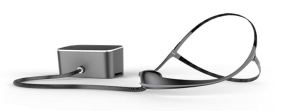Authorizations: SYNOJOYNT, TRUETEAR Tear Neurostimulator, CURVE Positive Airway Pressure System

SYNOJOYNT
Teva
INDICATION FOR USE: Treatment of pain in osteoarthritis (OA) of the knee in patients who have failed to respond adequately to conservative nonpharmacologic therapy and simple analgesics (e.g., acetaminophen)
DEVICE DESCRIPTION:
- Sterile, non‐pyrogenic, clear, viscoelastic solution of hyaluronan contained in a single‐use prefilled syringe
- Viscous solution of sodium hyaluronate in buffered physiological sodium chloride
- Sodium hyaluronate is a high molecular weight fraction (approximately 2.5×106 daltons) of a natural complex sugar polymer consisting of repeating disaccharide units of Na‐glucuronate‐N acetylglucosamine
EFFECTIVENESS & SAFETY:
- Double-blind, prospective, multi-site, randomized, threearm, parallel group, n=599, injected into the target knee of subjects with OA, vs. placebo, 26 weeks
- Adaptive investigation, two interim analyses (after approximately 50% and 75% of the planned sample size), sample size reassessment as needed
- WOMAC pain scores : -167.73 (9.32) vs. -131.64 (9.35) in placebo group, p=0.0033
- Statistically significant differences in the WOMAC Pain score, WOMAC Stiffness score, WOMAC Physical Function score
- Incidence of TEAEs similar to that of saline placebo treatment
REGULATORY PATHWAY: PMA
- Classification: III
- Product Code: MOZ

TRUETEAR Intranasal Tear Neurostimulator
Allergan
INDICATION FOR USE: Provides a temporary increase in tear production during neurostimulation to improve dry eye symptoms in adult patients with severe dry eye symptoms
GENERIC DEVICE TYPE: Intranasal electrostimulation device for dry eye symptoms
- Prescription non-implantable, electrostimulation device intended to increase tear production for improvement in dry eye symptoms
RISKS AND MITIGATIONS:
- Tissue damage due to overstimulation/understimulation or mechanical injury (ex: tips too long), device breakage: Non-clinical performance testing, Software verification, validation, and hazard analysis, Electrical, thermal, and mechanical safety testing, Labeling
- Adverse tissue reaction:Biocompatibility evaluation, Labeling
- Infection:Labeling
- Electrical shock or burn:Electrical, thermal, and mechanical safety testing, Software verification, validation, and hazard analysis, Labeling
- Interference with other devices:Electromagnetic compatibility (EMC) testing
Software verification, validation, and hazard analysis, Labeling - Pain, headache, or discomfort: Clinical performance testing, Non-clinical performance testing, Electrical, thermal, and mechanical safety testing,
Labeling - Failure to mitigate dry eye symptoms: Clinical performance testing, Training
Labeling
REGULATORY PATHWAY: De Novo request
- Regulation Number: 21 CFR 886.5310
- Regulation Name: Intranasal electrostimulation device for dry eye symptoms
- Regulatory Class: Class II
- Product Code: QBR

CURVE Positive Airway Pressure System
Fresca Medical
INDICATION FOR USE: To treat Obstructive Sleep Apnea by delivering a therapeutic breathing pressure to a patient. It provides positive airway pressure during expiration and also during an incipient apnea. The system includes a dedicated flow generator and a patient interface, and is intended for use in the home environment. This system is to be used by adult patients weighing more than 66 lbs (30 kg)
GENERIC DEVICE TYPE: Positive airway pressure delivery system
- Prescription noninvasive ventilatory device that delivers expiratory positive airway pressure for patients suffering from obstructive sleep apnea. The system also provides positive airway pressure during incipient apnea. The system may include a dedicated flow generator and a patient interface
RISKS & MITIGATIONS:
- Adverse tissue reaction: Biocompatibility evaluation, Labeling
- Electromagnetic interference: Electromagnetic compatibility testing
Labeling - Infection:Reprocessing validation, Labeling
- Device software failure: Software verification, validation, hazard analysis
- Device hardware failure/malfunction leading to high airway pressure, carbon
dioxide rebreathing or ineffective treatment: Non-clinical performance testing
Labeling - Electrical shock injury or thermal injury: Electrical safety, thermal safety, and
mechanical testing, Software verification, validation, and hazard analysis, Labeling - Use error leading to ineffective therapy or patient injury: Labeling
REGULATORY PATHWAY: De Novo request
- Regulation Number: 21 CFR 868.5273
- Regulation Name: Positive airway pressure delivery system
- Regulatory Class: Class II
- Product Code: QBY
Image credit: Teva, Allergan, Fresca Medical